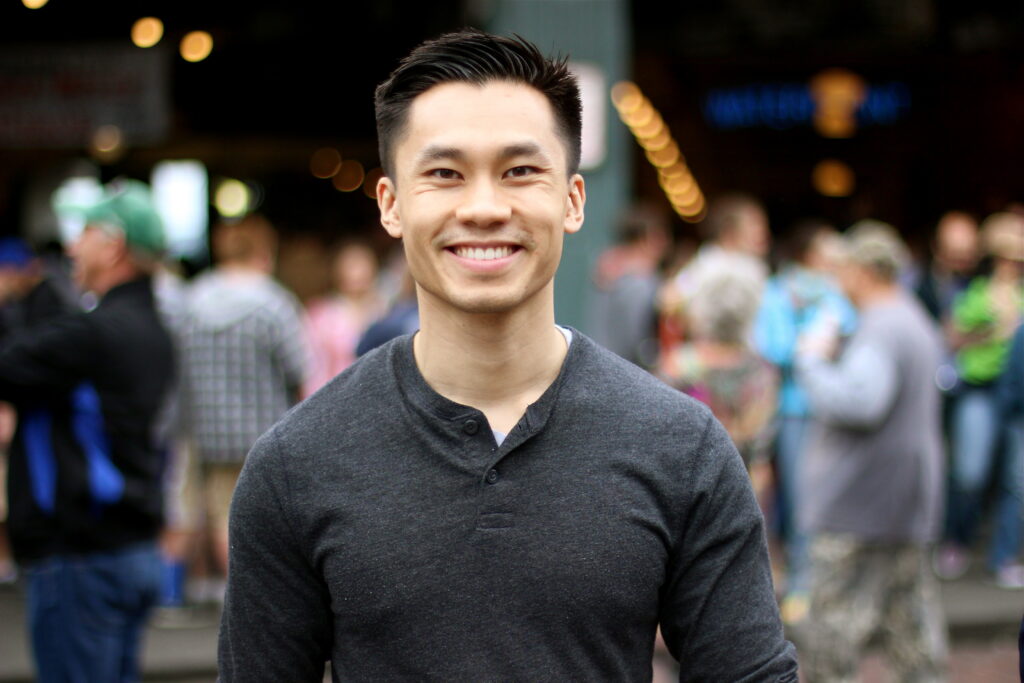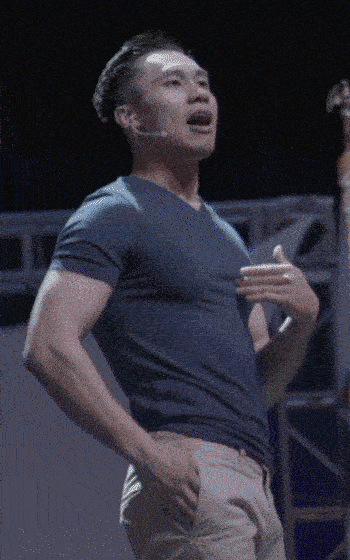
NACA’s Coffee & Conversation on Student Organization Fairs was hosted by Kayla Brennon. The conversation involved panelists discussed planning student organization fairs, challenges and obstacles, platforms used, and how institutions are implementing guidelines.
Panelists:
Joseph Kimber, Jr., Coordinator, Office of Student Involvement, University of Central FL; Jen Pelletier, Associate Director, Student Activities, The Ohio State University; Rich Ramos, Associate Dean of Students, Simpson College; Courtney Williams, Director, Center for Student Engagement & Leadership, Dillard University
Questions
1) Have your institutions made any decisions regarding contingency planning?
Rich started off the conversation explaining that their intention at Simpson College is to be on campus by fall; they will take into consideration guidance from the CDC to make sure they do things appropriately. They will have a variety of options and models whether they go to 100% virtual or 100% normal.
Courtney added that they plan on opening at the regular time in the fall however they are looking at a hybrid model with a lot of room for adjustments. They will also be following the guidelines put in place by the CDC and WHO. They will require everyone where appropriate PPEs. Things they are taking into consideration are: what will office hours look like, what does the capacity for student organization and events look like, limiting the number of people at each event, and beyond the maximum allowed, others can join in virtually. They would like their virtual organization fairs to become familiar with technology to be better informed.
Jen mentioned that they have not made a decision yet regarding what fall semester will look like, but, they are creating a contingency plan, either hybrid, all virtual, or on campus. They are reaching out to key partners who have helped with events in the past, for example campus catering, sense of campus partners. To make sure all events can be implemented they are making sure their contingency plans align with Ohio State’s plans.
Joseph echoed that the University of Southern FL is also unsure about the fall semester and they might also look at a hybrid of virtual and on campus, given that it is not likely they will return to being fully on campus. They are having conversation with key players, like the student union, to address capacity needs. One of their boards, which provides resources and support to the student governments on campus, is reaching out to the Student Government Association to gather ideas from the students as well.
2) What are some of the things you are considering as you plan? What obstacles might you have?
Joseph said they are paying attention to the general communication coming from a state level, how the state is preparing and slowly opening up, and that they are trying to stay in compliance. Some of the challenges they are having is taking into consideration if they make reservations with the union now, or vendors, what to do if they cannot have events in the union? They are also exploring how to keep everyone safe, looking at the logistics regarding details, timing, location, and how this might all affect the students.
Jen said the format they will be using will be different in the past and they want to make sure that the students who are interested in getting involved will be trained in how to navigate the new method. Regarding program execution it will also be different this year as they consider changes to programmatic impacts, resource rooms, revenue, the marketing department, and the like. Students may not have access to some of these things and that will be another thing to consider adjust to.
Courtney reflected how this different format of programming will impact the community building on campus: what will it look like if students cannot gather together the way they did in the past? He said that he wants to make sure connections are still happening, and they are brainstorming how to make up for that in person connection virtually. Also, the financial implications are being taken into consideration. He says the biggest thing is “being open and adaptable.”
Rich chimed in saying that being a small school they are challenged with resources. They want to make sure students are staying connected, thus they have been having conversations with students, student groups, student leaders and advisors on how to adapt to the changes, how to move forward. They are also thinking of the larger impact regarding partners, such as, the food plant, the set up team, etc., and looking at sanitary issues and cleanliness and making sure they have the resources in place to ensure safety. He stressed a concern is how to mitigate risks and make it a positive environment at the same time.
3) Knowing the obstacles what are creative solutions you are exploring?
Joseph answered by saying their school changed from having a club showcase and made it into an involvement week, with a specific theme every day, i.e., sport club one day, civic organization the next. They will have small groups put into small rooms in the union and will expand on this framework in the fall.
Courtney said they are considering doing summer training for leaders and advisors, focusing on risk management and safety. They will be using online learning tools and an event conversion document sheet out of Tulane University. The conversion sheet is used to input the event, the number of people, and helps with how to adapt from a regular in person event to all virtual.
Rich said they are doing a variety of things and keeping options open. They are testing out a hybrid model, an in person model, and a virtual model including tools such as: FlipGrid, Zoom breakout rooms, Lunchpool. They do not have software exclusive to their school but they use the free version of All Seated to upload maps of their rooms to help them organize to fit their needs for events.
Jen mentioned that they are spreading the events out over multiple days, having specific activities on each day, all the while using social distancing measures such as spacing and one-way sidewalks. They will also stagger how many people attend the events so as not to all come at once. For vendors, they are looking at different ones for different virtual fairs, such as, Brazen, VFairs, and Handshake.
4) How will you work with your student leaders creatively to make a new format?
Rich said they are having real and honest conversations about the reality of the situation, they are utilizing students ideas on what they might do, while keeping consideration of all necessary precautions. He stated, it “made me and everybody else on our team think about how we do stuff, to think more creatively…” and he is seeing this as an opportunity to become more creative.
Jen said they are thinking of virtual summer program series with different topics that focus on how student government associations can adapt their operations and engagement effort to a virtual or hybrid method. Different topics could include: programming, social media, recruitment, etc., and could continue with different topics during the fall semester.
Joseph mentioned they are hosting leadership workshops around team bonding, money management, and how to make a transition packet. They have a series of virtual programs to offer as well. They are exploring ways to reformat the yearly retreat they usually have for student government agencies, either a hybrid or virtual; they are exploring creating modules they can access throughout the year.
Courtney said they are trying to take advantage of the summer, offering a summer series beginning in June, since students are not able to take part in internships etc. Their goals is to keep students engaged.
Kayla chimed in saying NACA has a summer series on a variety of topics: programming boards, esports, diversity/inclusion/equity, etc. They are also partnering with ACY to host organizations every summer.
5) What platforms are you using?
Rich stated they don’t have any one set platform as it is not in their budget, therefore they have to be creative. They are a Microsoft campus and utilize Teams for clubs and organizations, to post resources, for internal communication, and put files up. They use SurveyMonkey for elections, and Zoom for other things.
Courtney mentioned that they are a Google campus therefore they use the Google hangouts for meetings with smaller groups of students. For larger groups they us Zoom breakout rooms. They use Campus Labs, Engage, for a repository for content and Canvas for Advisor trainings.
6) How are you inviting community partners or non-registered student government associations to involvement fairs, and how are you going to include them in a virtual or socially distanced format?
Courtney said they do a lot with the community as community service is required of students. They will do some type of training for community members for when they interact with students; it will be similar to what they are doing with the advisors.
Jen said they will invite community members to involvement fairs and will work with community partners so they can have a presence at volunteer day’s virtual events, as it will be a better place to highlight them versus with the student government associations.
Rich said that those campus events are on hold at the moment because of the risk of outside people coming onto campus. They are looking at a virtual option to engage them.
7) Regarding policing social distancing policies, have you thought about how you will do that?
Rich said they are considering layouts of rooms, minimizing capacity to the 25% rule. They have to ensure appropriate walk spaces, make sure there is one in-door and one out-door, post floor stickers for proper distancing, and perhaps putting up barriers of some kind. They are also going to be using thermal scanners to screen everyone. One thing they need to think of is how to communicate to someone that can’t come into the space, and how to encourage that person to self-isolate.
Jen said their involvement fair is usually outside in one section, and they are considering spreading their event, and people, across the entire campus. She echoed Rich’s concerns over the importance of safety.
Resources
Handshake a platform for students to find jobs, internships, job recommendations
allseated a platform with digital planning tools to help organize and design layouts of spaces
vFAIRS virtual events platform to host conferences, job fairs, events
Brazen virtual career fair platform
Flipgrid an online platform used to communicate with students, create meeting places for students, faculty & staff, and communities
lunchpool a virtual events platform
CampusGroups a community platform bringing together student organizations, departments, and other campus-wide groups
NACA Summer Series
NACA SOI Virtual Student Organization Institute


